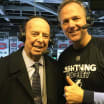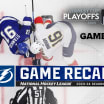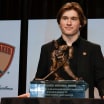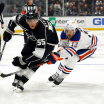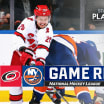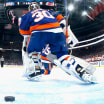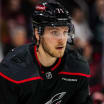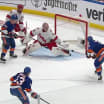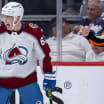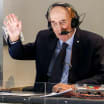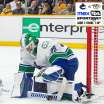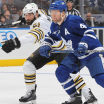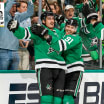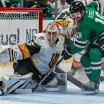Legendary hockey reporter and analyst Stan Fischler writes a weekly scrapbook for NHL.com. Fischler, known as "The Hockey Maven," shares his knowledge, brand of humor and insights with readers each Wednesday.
Today, Stan continues a series of reminiscences about his first visits to arenas from the NHL's Original Six era with a look at his initial trip to Boston Garden, a solo jaunt for a Thanksgiving game that was part of attending a home-and-home set between the Bruins and New York Rangers.
Boston Garden was tough place for visiting teams, fans
Longtime home of Bruins not hospitable place for opponents
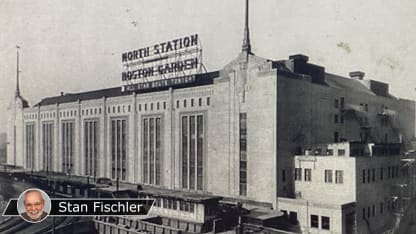
By
Stan Fischler
Special to NHL.com
Some clubs had pretty regular home-and-home dates during the Original Six era. For the New York Rangers and Boston Bruins, that often included Thanksgiving -- they played a home-and-home set that included the holiday seven times during a 10-year stretch from 1953-54 through 1962-63.
On Nov. 24, 1954, Thanksgiving Eve, the Bruins came to Madison Square Garden; on the following night, the Rangers returned the favor with a visit to Boston Garden. It was on this first visit to Boston that I learned Boston's Garden was a distant cousin of New York's more famous arena. This bit of history was fascinating.
Madison Square Garden opened in 1925 and was so successful that Boston sportsmen decided their city should have a new arena of its own. Ironically, it was Rangers impresario Tex Rickard who designed the Bruins' new arena, which partly explains why the building on Causeway Street originally was named "Boston Madison Square Garden."
As it happened, within 24 hours, I saw the Bruins play the Rangers at Madison Square Garden as well as the return match in Boston. After the
Rangers won 3-1
on Thanksgiving Eve in Manhattan, I boarded a midnight bus at the Greyhound Terminal just a slap shot away from Madison Square Garden. In those pre-Interstate days, it was a long, no-sleep ride on Route 1 that terminated in Boston at 6 a.m. Then, I grabbed the "T," actually a trolley car that ran underground, to the hotel next to the arena.
I had heard that Boston Garden was the least fancy of NHL arenas. As a train buff, I also discovered that it was surrounded by railroad tracks. An elevated line overshadowed the Garden marquee, which was across the street from a trolley car barn. Plus, an entire railroad terminal, North Station, was buried directly below the surface of the ice. Shoulder-to-shoulder with the transportation-arena complex was the fancy Manger Hotel, Boston's hockey headquarters, where I slept off my bus ride until a few hours before game time.
After I entered the arena, my first view confirmed what my Rangers pal, right wing
Wally Hergesheimer
, had told me: The ice surface at Boston Garden was one of the NHL's smallest "... and the Bruins players always seemed to be big." Visiting skaters also hated the fact that they had to walk through the crowd to get to the ice or return to the dressing room. It wasn't a hospitable trek for any visiting player. "We expected to get harassed by the fans," Hergesheimer said, "and we did."
Once I got to my seat and looked around, I could see the architectural similarity to MSG. Like its New York counterpart, this Garden included an arena area as well as a mezzanine and balcony. The difference was that Madison Square Garden's side balcony was built too far forward toward the ice; if you didn't have a seat in the first two rows, you couldn't see the action along the near boards. Rickard solved that problem in Boston by having the balcony set back far enough so that all balcony seats offered a full view of the ice.
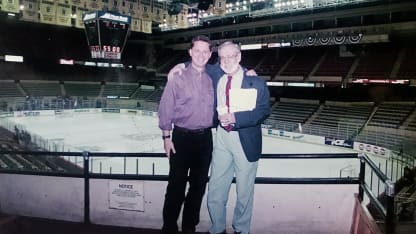
George Falkowski, Stan Fischler's long-time friend, sports reporter and producer poses with Stan inside Boston Garden.
Boston fans certainly lived up to their lively, sometimes raucous reputation; they were about 180 degrees different from the more modest clientele at Maple Leaf Gardens in Toronto. They also had music to get them on. Also unlike Toronto's rink, Boston Garden boasted a full-throated organ.
The man behind the keys, Leo Kiley, always played a special tune when the home team took the ice. Kiley would swing into a chorus of "Paree," which had become the Bruins theme song since the Bruins' late 1920s European junket, which included an exhibition game in Paris precisely when the tune "Paree" topped the hit parade. Kiley's spirited rendition always seemed to invigorate the Bruins before the opening face-off.
As for the crowd, I quickly deduced that of the 13,900 paying customers, 13,899 were rooting for the home team; I was the exception. As a native New Yorker, I now cheered for the Rangers, who somehow managed to stay even with their hosts. (I did discreetly tone down my cheering when the Rangers scored!)
It was an enjoyable game that ended in a
2-2 tie
. After the final horn, I hustled down to the visitors dressing room to view firsthand what it was like for the Rangers to snake their way through the regiment of hostile Boston rooters -- hopefully without any harm. On this night, the home faithful treated them with revolutionary decorum; no police riot squad was necessary.
I liked Boston Garden for a lot of reasons, starting with its compact size and the fact that it was surrounded by trains, trolleys, an elevated line and a first-class hotel. Besides, what other NHL team at that time could boast that it had a major league railroad terminal directly underneath center ice? None -- at least not until the fourth Madison Square Garden opened above Penn Station in February 1968.
